When is 5G coming to you? The definitive guide to the 5G network rollout
When is 5G coming to you? The definitive guide to the 5G network rollout
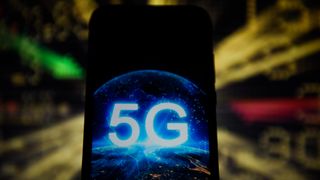
Even though publicly available 5G networks just historic their two-yr anniversary, you may nevertheless wonder when is 5G coming with faster service. 5G devices like the iPhone 12 may be widely bachelor as wireless carriers tout their new networks. But for almost of us, things don't feel much different than when LTE was the ultimate in cellular networks.
The truth is, 5G may accept already launched where you live, only you lot haven't actually noticed. First of all, you'd need a 5G-set up phone to pick up the point. And though 5G promises improved speeds over LTE, we're not seeing blazing fast speeds from the nationwide networks launched past each of the three major wireless carriers. At to the lowest degree, non nonetheless.
- Best family cell phone programme: Which ones include 5G coverage?
- Forget the iPad Pro 2020: Why you should buy the older ane instead
- Get the all-time 5G phones as your adjacent handset
If you can go a 5G indicate where y'all're at and you have a telephone with a 5G modem, you'll probable see improved functioning over LTE (aka 4G) networks. Only even with an uptick in speed, the 5G feel isn't all that dissimilar from LTE at this point. However, Roland Moore-Colyer has establish one compelling reason to adopt 5G.
The 5G landscape is constantly shifting and will go along to do and so for the remainder of this year and beyond. Hither's a status written report on where we are now, how we got here and what's ahead for 5G as the new networking standard blankets more of the country with faster speeds and lower latency.
5G explained
5G is the fifth generation of wireless communication standards, following previous iteration of wireless networking. Information technology was the arrival of 3G nearly 20 years agone that made it possible to surf the net on a smartphone, while 4G delivered speeds that enabled video streaming and an entire economy of apps that need sustained, reliable connectivity.
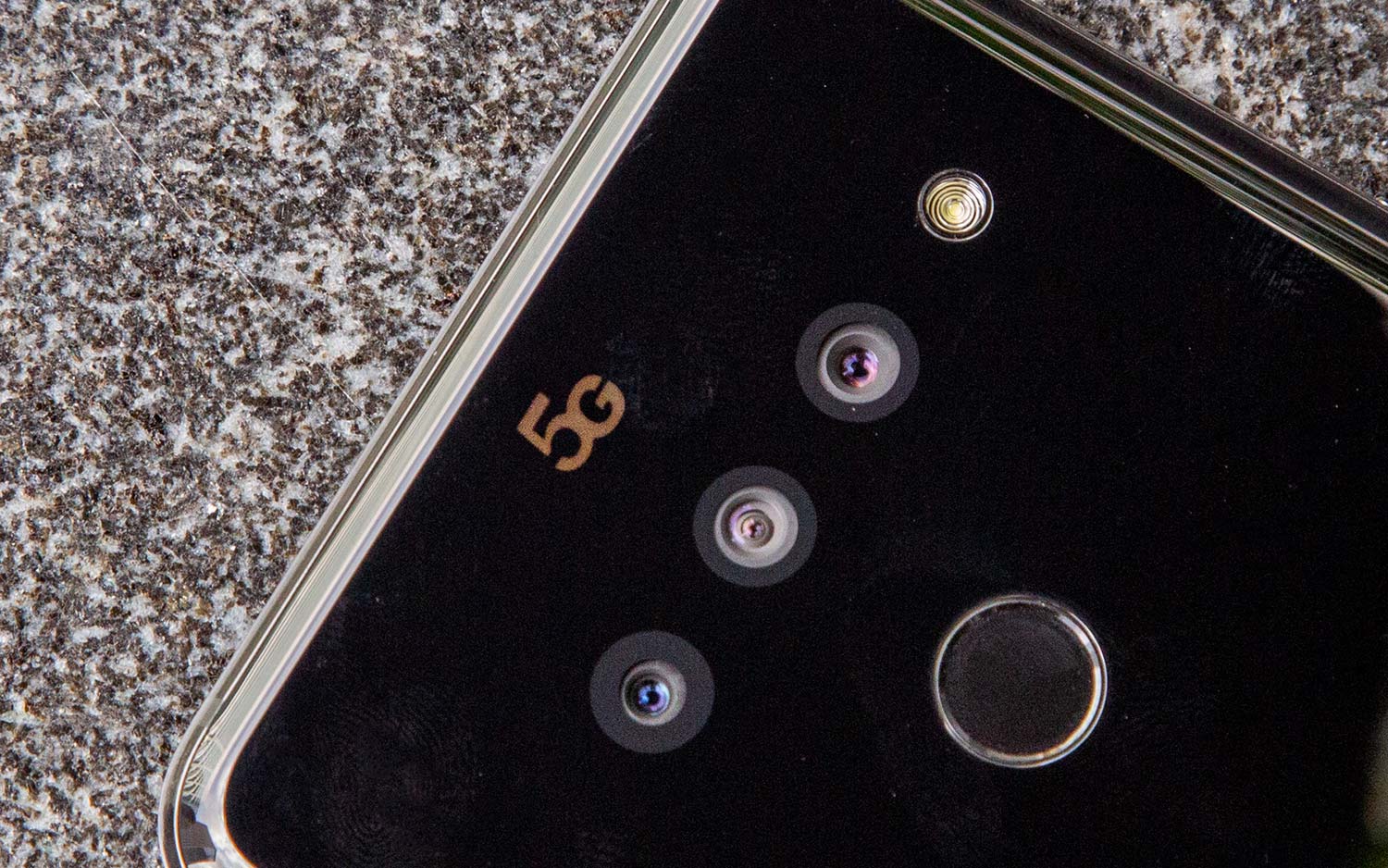
In 2017, the 3rd Generation Partnership Project—the grouping that creates the rules for wireless connectivity—issued the non-stand-alone standard for 5G, which allows 5G to coexist alongside 4G. The standard for stand-alone 5G got finalized a year later on. In the two years since, infrastructure developers such as Ericsson and Nokia have worked with the 4 major wireless carriers in the U.S. to build out 5G networks and test them with devices equipped with 5G radios that comply with the new standard.
That means your existing smartphone won't be able to receive a 5G signal (unless, of class, you've already upgraded to a 5G device in the by year-and-a-half). The new standard requires a new device that may hit download speeds of 1 Gbps (but but on a high-band 5G network) and theoretically hitting a tiptop of 10 Gbps.
In theory, that would allow y'all download total-length movies in seconds. More significantly, information technology opens up a world of possibilities we can't even imagine yet.
When is 5G coming: U.South. network cheat sail
| AT&T | Verizon | T-Mobile | |
| Current 5G coverage | fourteen,000 cities low-band 5G service with faster 5G Plus in 38 cities | 230 million people covered with depression-speed 5G along with high-speed service in 71 cities | 287 1000000 people covered by Extended Range 5G |
| Initial 5G engineering science | Millimeter wave in 5G Plus cities; low-band spectrum elsewhere | Millimeter wave in Ultra Wideband cities; DSS elsewhere | Millimeter moving ridge in half-a-dozen cities, 600 MHz for nationwide network |
| Required plan | Unlimited Prepaid ($threescore/month); Unlimited Starter ($65/month); Unlimited Extra ($75/month); Unlimited Elite ($85/month) | Do More or Play More ($fourscore/month) or Become More ($ninety/month); Unlimited prepaid ($75/calendar month) | Essentials ($60/month); Magenta ($70/month); Magenta Max ($85/month); T-Mobile Connect ($15/month) |
| Major supported devices | Galaxy S21; Galaxy Note 20; iPhone 12; LG Velvet; Galaxy A71 5G; LG V60 ThinQ; Milky way Z Fold 2; Galaxy Z Flip 5G; LG Wing; Pixel 4a 5G and v; Motorola One 5G; Motorola Razr 5G | Pixel 5; Galaxy S21; Milky way Note 20; Galaxy A715G; Motorola Edge Plus; OnePlus 8; LG V60 ThinQ; LG Velvet; Milky way Z Fold 2; LG Wing; TCL 10 5G; iPhone 12 | Galaxy S21; Galaxy Notation twenty; OnePlus ix and ix Pro; Milky way A71 5G; Galaxy A51 5G; Galaxy Z Flip 5G; LG V60 ThinQ; LG Velvet; Motorola Razr 5G; Revvl 5G; iPhone 12 |
5G technologies affecting when 5G is coming
The backbone of the 5G standard is comprised of depression-, mid- and high-band spectrum. 5G networks operate on different frequencies with sub-6 GHz and millimeter-moving ridge (20-threescore GHz) at the low and high ends of the spectrum.
Carriers were already using sub-6 spectrum for existing LTE networks, and at present they need more of it to build out 5G. Millimeter-wave frequency was previously unused, and the advent of 5G has given carriers access to the spectrum that will enable the faster speeds we expect with the new standard.
Merely mmWave has a few drawbacks: Considering information technology's so loftier-frequency, the waves don't travel long distances. In fact, they can't even travel through windows or buildings. That means a device operating on an mmWave-based network — primarily Verizon's at this betoken, though T-Mobile and AT&T likewise employ mmWaver to some extent — will need to be extremely shut to a 5G node to catch a bespeak.
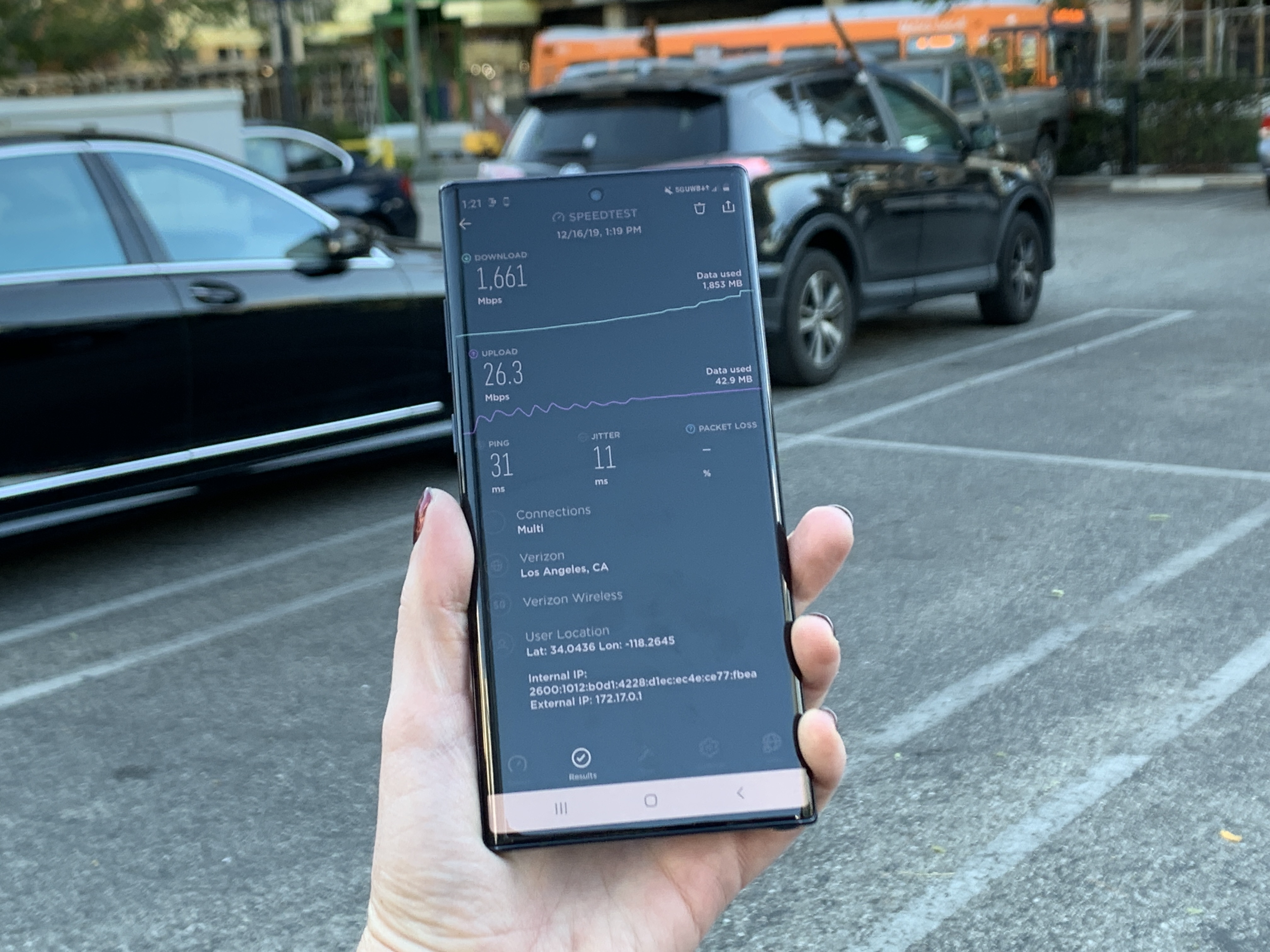
That's fine in a dense metropolitan area, where yous tin stick a 5G node every few hundred feet. Only in rural areas where at that place are few buildings or jail cell towers, mmWave won't work.
That'due south why both sub-6 bands are necessary to make 5G signals more widespread. Indeed, Qualcomm CEO Christian Amon has long insisted that real 5G volition be a combination of the low, mid, and high-band frequencies.
T-Mobile provides a good instance of this. Information technology launched nationwide 5G coverage at the end of 2019 using sub-6Hz spectrum. That meant lots of coverage — at launch, T-Mobile'due south Extended Range 5G reached 5,000 cities — merely at speeds that were only 20% faster than 4G on average. T-Mobile has afterwards begun to incorporate the midband 2.5GHz spectrum it acquired during its merger with Sprint to boost functioning for what the carrier has dubbed Ultra Capacity 5G. In some cities, T-Mobile uses all elements of 5G — mmWave, mid-band and sub-6Hz spectrum — for what it calls a layer cake approach.
When is 5G coming to your surface area?
5G is already here, but unless the stars of your location, the wireless carrier yous subscribe to and the smartphone you lot own are perfectly aligned, y'all probably can't use it nonetheless.
AT&T, Verizon and T-Mobile each offering 5G coverage, merely there are caveats to their 5G. First, you'll need a 5G-ready device — that's easier than ever, every bit many of the top telephone models come up in 5G versions and we're even starting to come across cheaper 5G devices that don't cost much more than $500.
You also take to be in an expanse where there'south coverage from your particular carrier — some other cistron that's more likely than information technology was a year ago, now that Verizon joined AT&T and T-Mobile in extending coverage across the country, though not at speeds anywhere close to the one Gbps download speeds you've been hearing virtually.
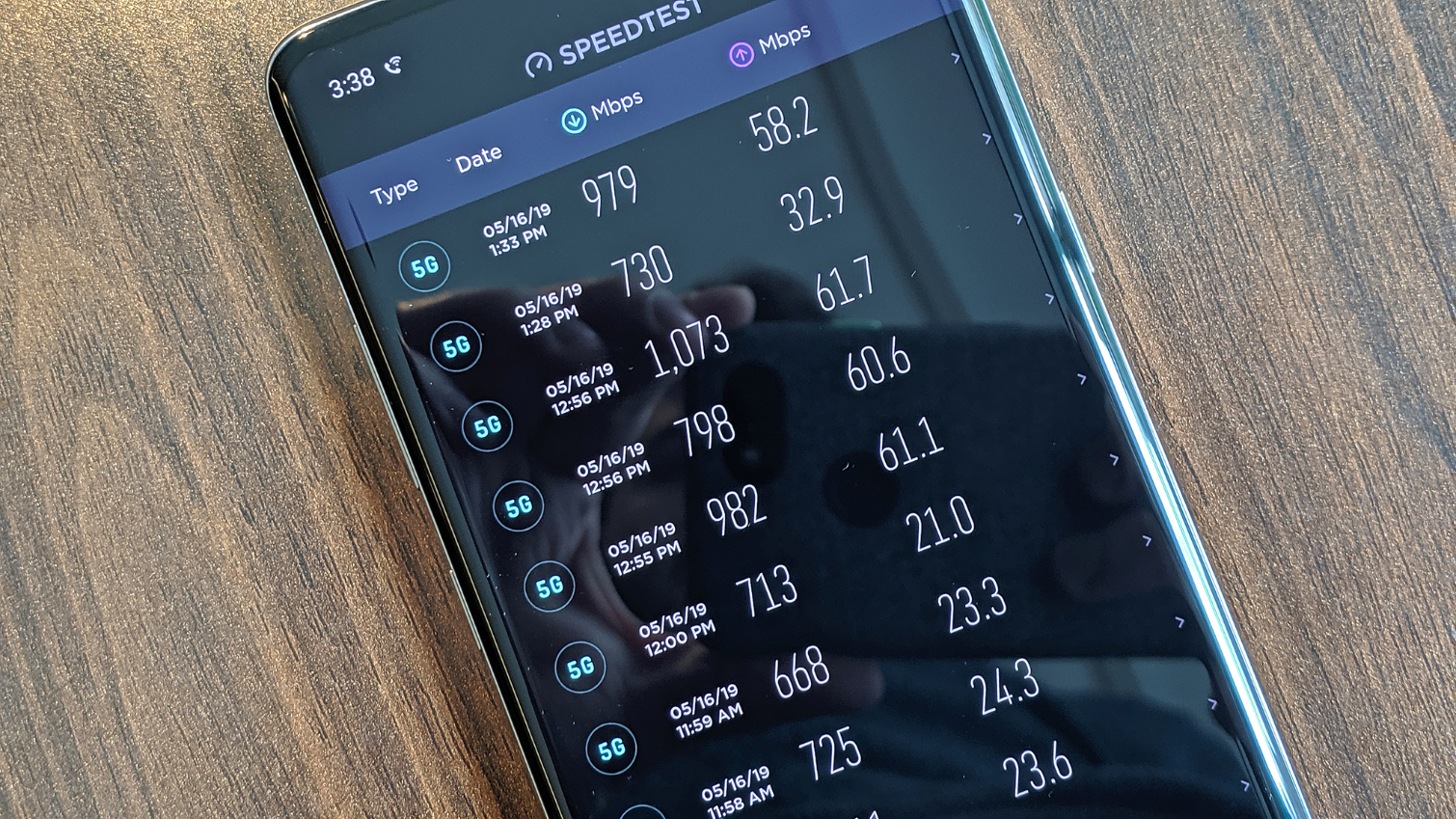
What's more than, it'southward evident many smartphone users aren't sure what 5G is. In fact, 1 in three Americans already thought they had 5G, according to one 2019 study. The results showed that 47% of AT&T subscribers who own iPhones think their device is 5G-capable. AT&T's misleading 5G Evolution logo (5GE) to describe service that's really just advanced LTE, probably aided that confusion.
When is 5G coming to more areas and how will it perform?
The current state of 5G looks like this: Verizon has high-speed 5G in parts of 71 cities, along with mmWave towers in many stadiums, arenas and airports. To mark the inflow of the iPhone 12 last autumn, Verizon launched nationwide coverage, which now reaches 230 meg people. That service isn't as fast as Ultra Wideband and uses lower-ring spectrum coupled with dynamic spectrum sharing (DSS) technology that repurposes LTE for 5G coverage.
Verizon just snapped up a bunch of C-band spectrum, which it's hoping to use to bolster the range of its faster 5G coverage. That would help Verizon make upward for the head first the other carriers had in providing nationwide coverage.
T-Mobile was the start to hit that milestone, and its 5G service now reaches 8,300 cities and towns, with mid-band coverage giving a speed boost to customers in more than 1,000 cities. A quarter of the way into 2021, T-Mobile now says its nationwide 5G network reaches 287 1000000 people; of that full, 125 million people tin can savour faster Ultra Capacity 5G.
AT&T has launched its ain nationwide network, likewise, reaching fourteen,000 cities and towns with low-band coverage and high-speed mmWave service in 38 of those cities. This faster 5G Plus offer is also available in 17 arenas, stadiums and convention centers dotted effectually the U.South..
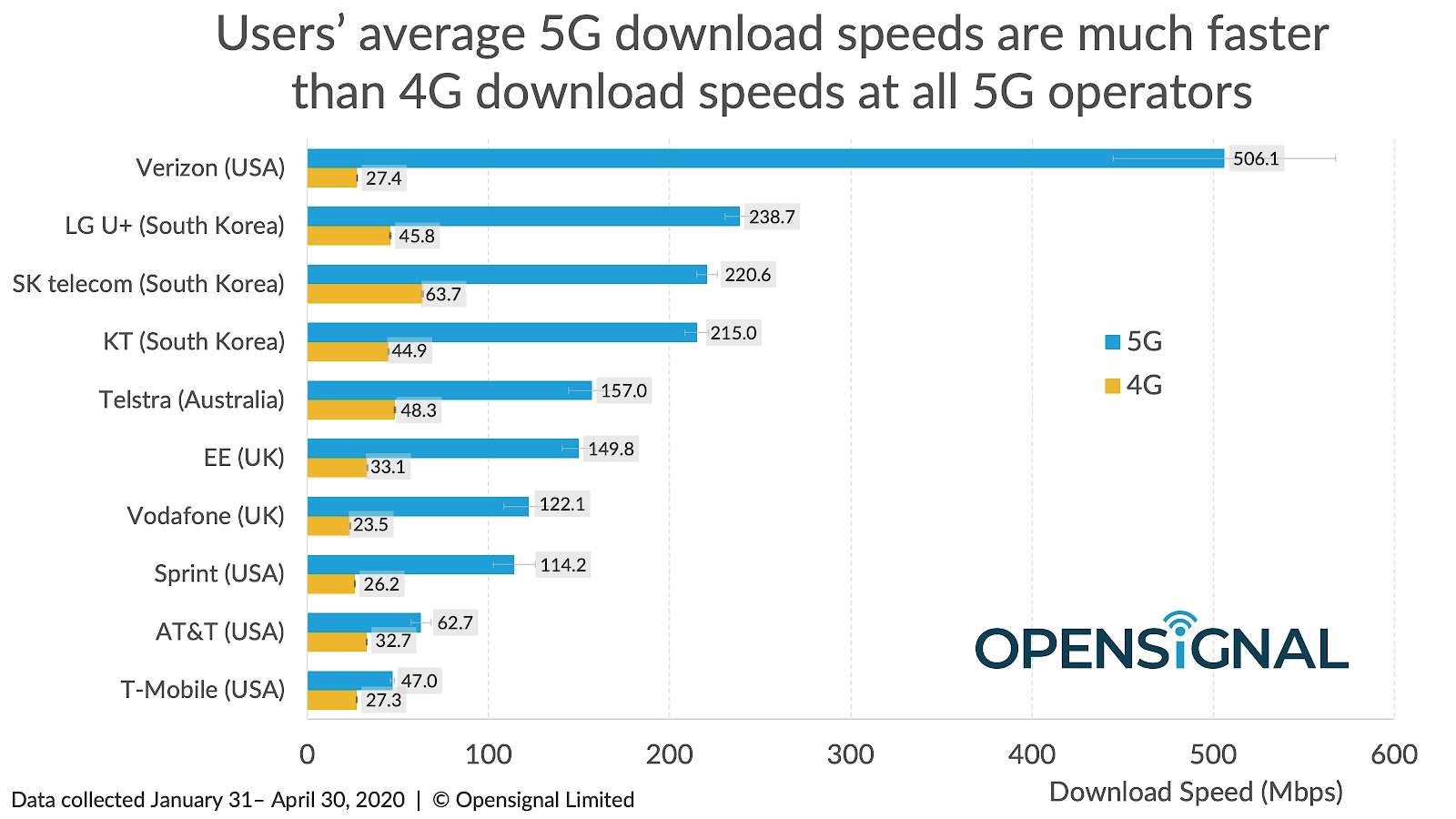
A 2020 study by OpenSignal detailing 5G performance illustrates what affect the different 5G technologies tin can accept on networks. Verizon, which had relied exclusively on mmWave in its initial 5G launch, boasted the best speeds by far at the time — 506.1 Mbps. Other carriers using mid- to low-ring 5G, saw slower average download speeds — 114.2 Mbps for Dart, 62.7 Mbps for AT&T and 47 Mbps for T-Mobile. (This survey was conducted prior to T-Mobile'south efforts to fold Sprint's network into its 5G service.)
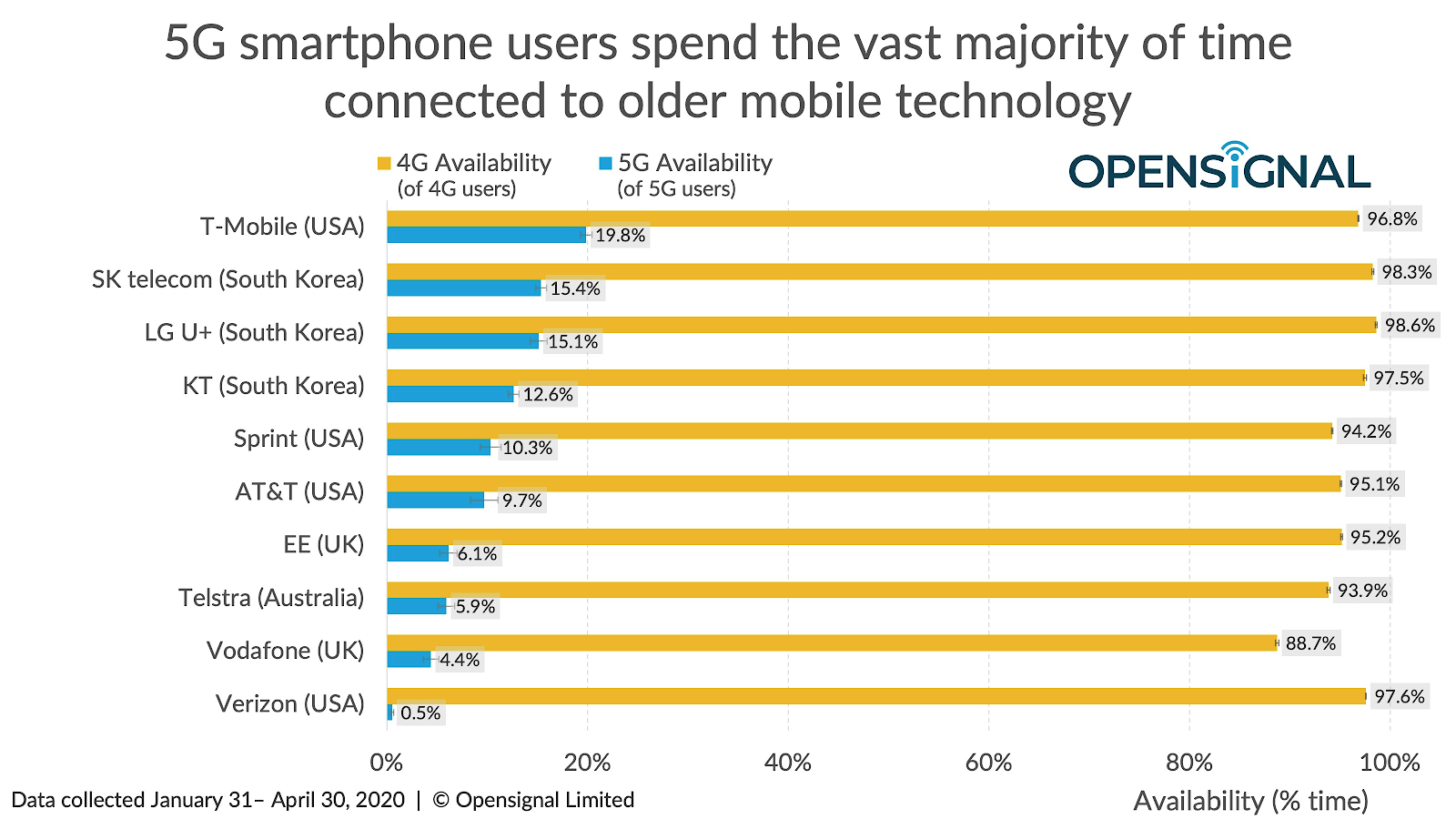
But take a look at 5G availability. The same carriers who accept slower speeds because of mid- to low-band-based 5G tin can boast a wider achieve. Verizon and its mmWave-based 5G network has the lowest percentage of availability of all, with users able to get a 5G connexion less than ane% of the time.
Who has the best 5G network right now depends on who'due south doing the counting. And the pendulum has swung pretty decisively toward T-Mobile. Ookla said the Uncarrier had the fastest 5G at the terminate of March 2021, knocking AT&T out of the height spot. (AT&T is withal tops in RootMetrics' latest survey.)
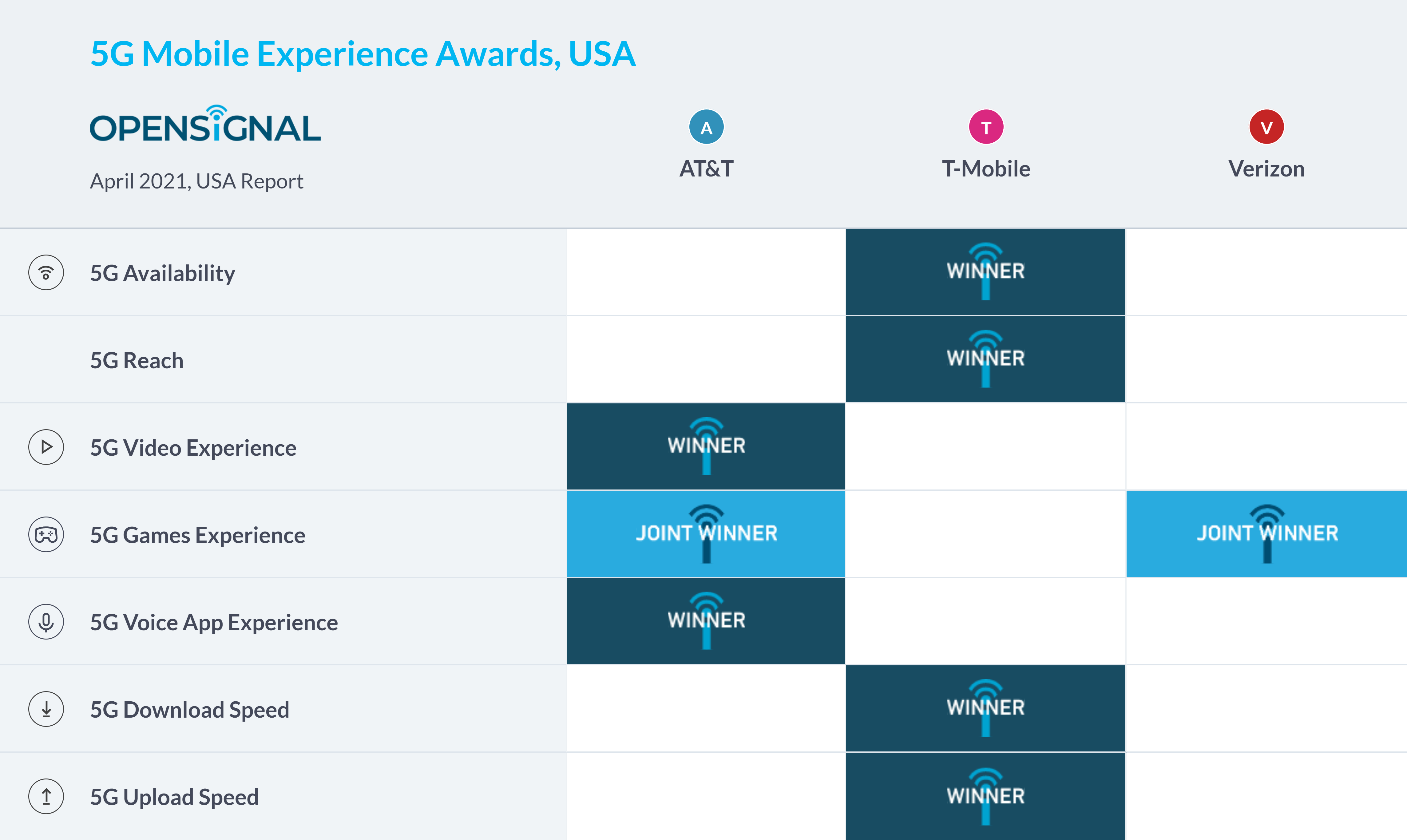
Meanwhile, OpenSignal published its results for the first quarter of 2021, where T-Mobile is pretty dominant, topping the central rankings for best 5G speed and greatest 5G availability. AT&T fared well in video experience, while it shared honors with Verizon for 5G gaming.
When is 5G coming to more than phones?
Good news — after 5G phones were few and far between entering 2020, we're at the phase where every major phone release now includes 5G capability. That includes the launches of the iPhone 12 (Apple's first 5G phones) and the Galaxy S21, the third 5G capable-release in Samsung's Galaxy S family unit.
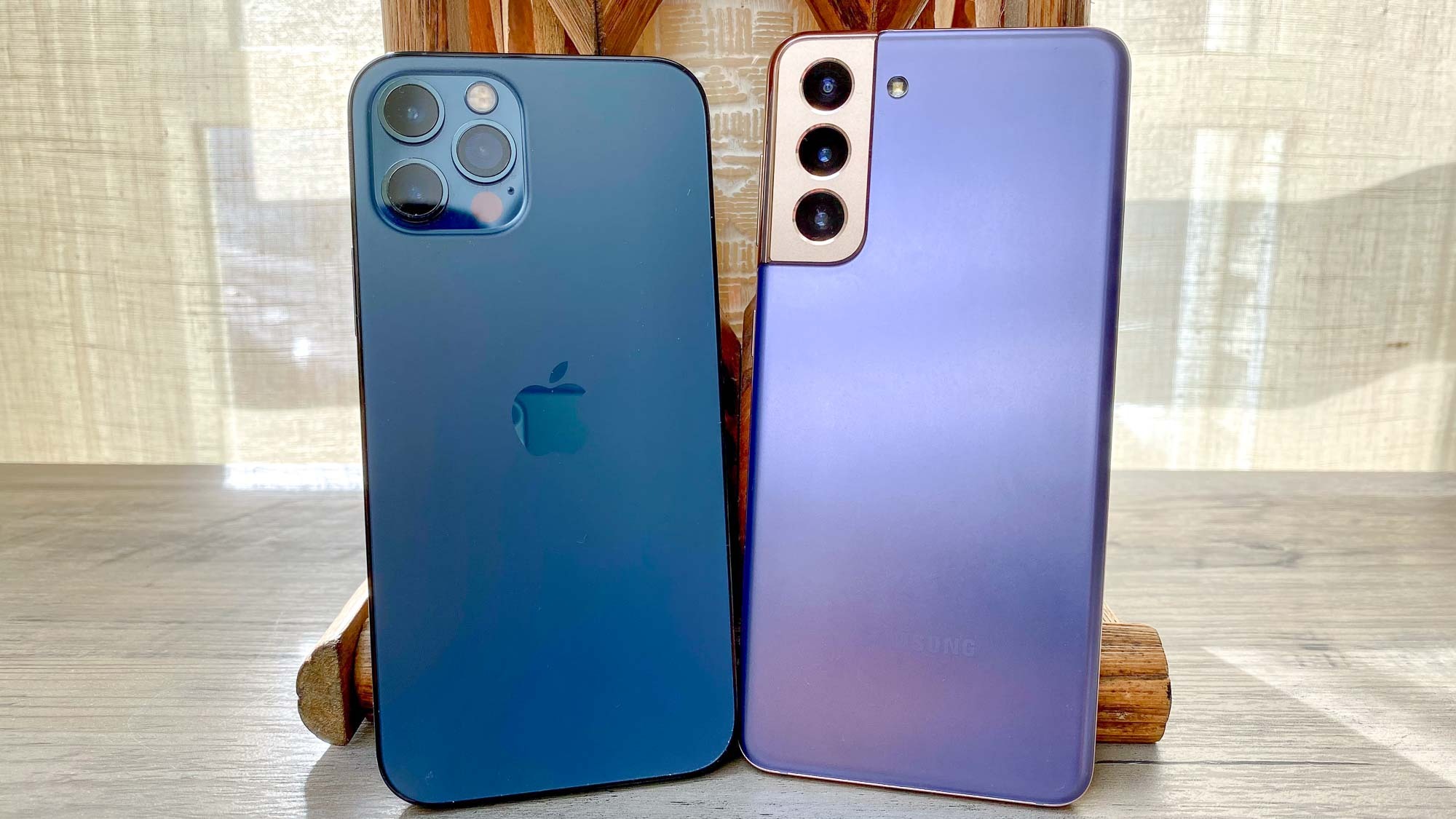
In add-on to those devices, major flagships from OnePlus, LG, Google and Motorola all offering 5G connectivity. More chiefly, midrange and budget phones are starting to support 5G as well, thanks to less expensive chipsets like Qualcomm's Snapdragon 765G. 5G phones nether $500 include the Pixel 4a 5G, Motorola Ane 5G Ace and TCL 10 5G UW. The OnePlus Nord N10 5G is simply about the cheapest 5G device nosotros've seen at $299, while Samsung hopes to challenge that with the $279 Galaxy A32 5G.
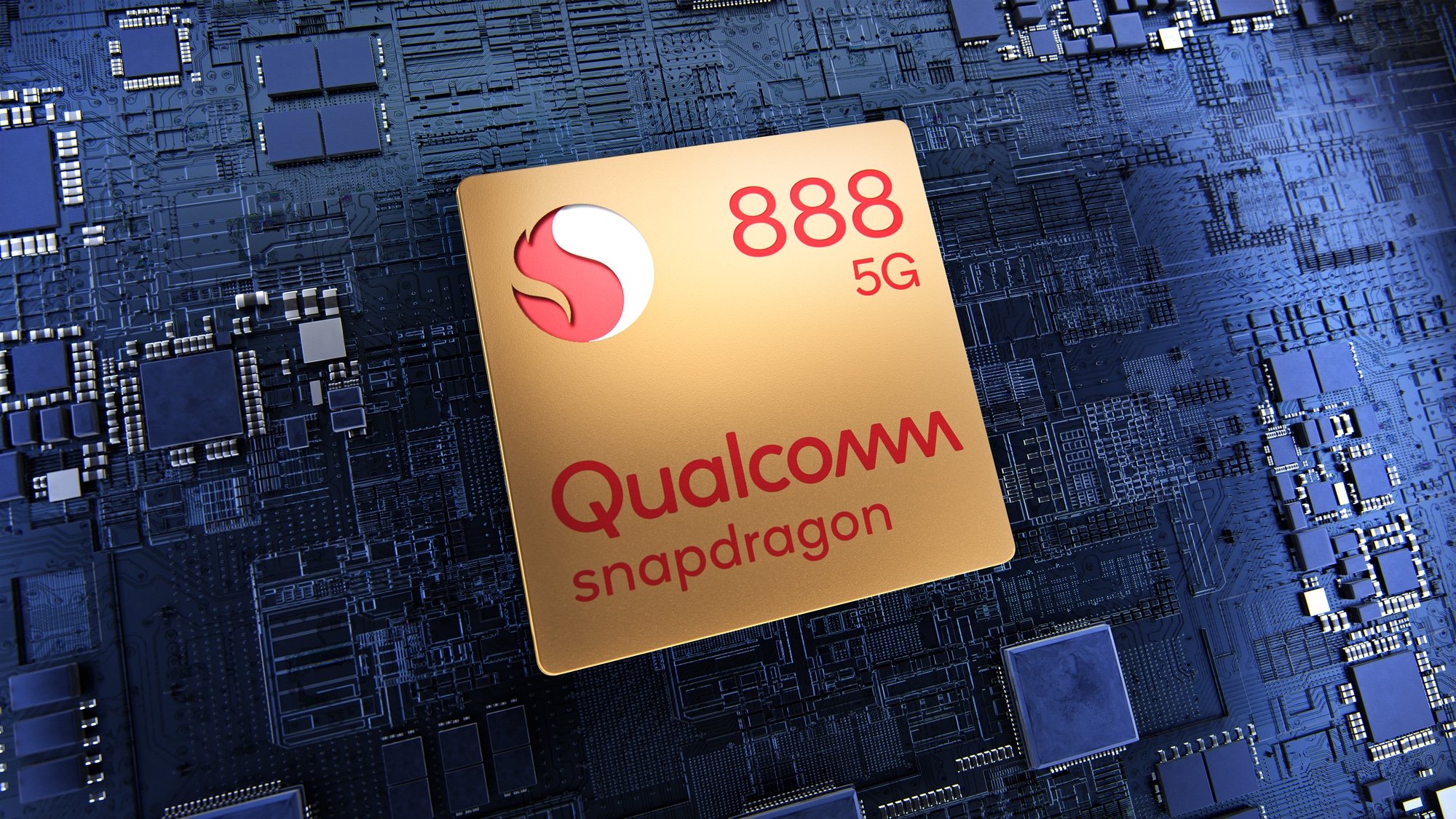
Expect the 5G devices to keep coming during the rest of 2021, peculiarly at the high finish. Qualcomm has introduced the Snapdragon 888 and Snapdragon 870 5G for flagship phones; both new chipsets include 5G modems, and yous'll see them powering well-nigh frontline Android devices this year.
When is 5G coming to the iPhone?
It'due south already here. Last autumn, Apple tree went all in on 5G, introducing four models that support 5G, including Verizon's Ultra Wideband coverage. Ultimately, that could be the heave 5G needs.
With the iPhone 12 mini, iPhone 12, iPhone 12 Pro and iPhone 12 Pro Max now out and ranging in price from $699 to $1,099, don't look Apple to look back. iPhone 13 rumors advise that 5G will exist a role of this fall's phone updates, also. Now the but question is when will Apple release an iPhone SE with 5G?
When is 5G coming to devices beyond phones?
People equate the G's — 2G, 3G, 4G and now 5G — with smartphones, because that'due south always been the place where we've been able to see an indicator of what kind of connectivity we're getting. But that's only part of what 5G is — the faster speeds will mean so much more than but higher-quality streaming and lightning quick downloads.
"5G will exist the post-smartphone era," Robert J. Topol, Intel's full general director for 5G business and technology, said during an interview at the 2019 Mobile World Congress. "Phones are the kickoff place to launch because [they're] such an anchor in our lives from a connectivity standpoint."
That'south in the procedure of changing.
Lower latency will make augmented reality and virtual reality more useful — and eliminate nausea — because there won't be whatever lag. AR spectacles and VR headsets haven't yet cracked the mainstream, but tech companies are betting that these devices will eventually supercede our smartphones. With 5G, that could actually happen.
"Connected PCs, connected IoT products, connected AR/VR, connected gaming consoles, things like that — we see all of those on the horizon," said Ryan Sullivan, Dart's vice president of product engineering when we spoke to him in Dec 2019 before he became vice president of devices and technology at the new T-Mobile. "They may not all be a 2020 affair, but you start to see some of those new utilise cases and new product categories emerge."
To that end, Qualcomm concluded 2019 by releasing its XR2 mixed reality processor with 5G connectivity. That chipset powers the Oculus Quest two, which came out last yr. Qualcomm is also pushing 5G to always-connected laptops, with its Snapdragon 8cx Gen two platform coming to 5G-capable devices from both Acer and HP amid others.
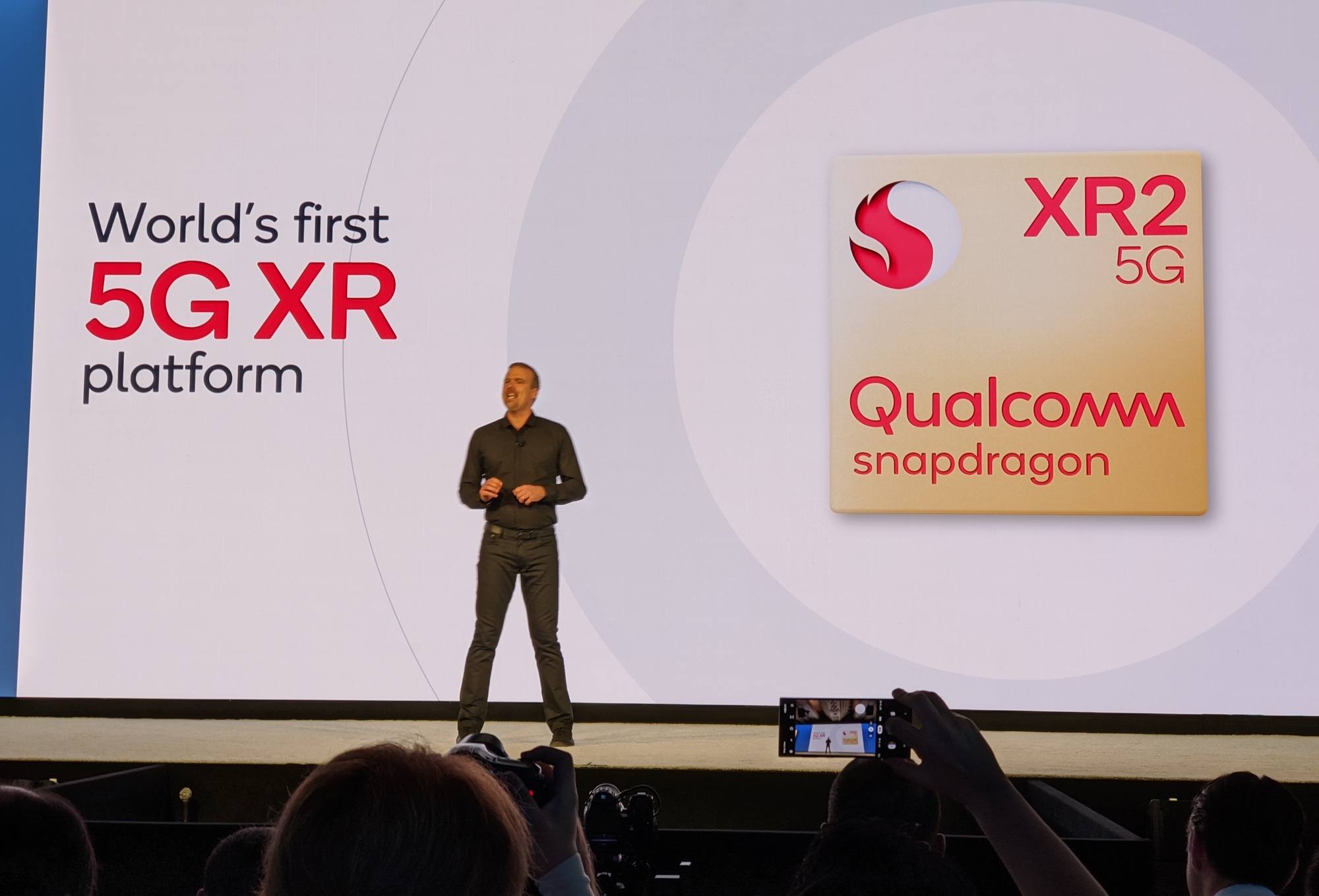
Amidst the ways 5G could change your life, schools could take advantage of virtual- and augmented-reality experiences that volition bring concepts out of textbooks and into existent life for students. Faster connectivity and no latency could also revolutionize hospitals, enabling holograph-assisted surgeries. On the roads, 5G could make self-driving cars safer, because advice betwixt vehicles and infrastructure will go instantaneous.
"Information technology's not just speed and latency, it'southward so many other things," Verizon chief production development officer Nicki Palmer said during the December 2019 Qualcomm tech summit on 5G. "This transition from 4G to 5G is even bigger and bluntly much more revolutionary."
This isn't going to happen overnight, just wait major shifts thanks to 5G in the side by side five years. Qualcomm'south Amon predicts there will be 2.eight billion 5G connections past 2025. (That's not only phones, but rather connected devices, likewise.)
What will happen to 4G now that 5G is here?
Unlike past generations of connectivity, 4G and 5G will coexist. When your device drops a 5G signal, it will fall back on LTE. The hand-off should be ephemeral—aside from the fact that your upload and download speeds will decrease.
This volition be especially useful in areas of the country where 5G networks will accept longer to get off the basis.
Existing 4G networks will also play a role in carriers edifice out their 5G coverage, every bit technologies like dynamic spectrum sharing will allow carriers to share their spectrum betwixt 4G and 5G uses.
And the improvements carriers are making to their networks to set for a nationwide 5G rollout will make 4G better, besides. When we tested AT&T's 5G Plus network in Las Vegas in 2019, nosotros saw 900 Mbps over 5G. LTE tin't compare, but we also clocked more than than 200 Mbps on an iPhone running on AT&T's 5G E (advanced LTE) network. That's exponentially better than AT&T'due south existing LTE network, which averaged download speeds of 32.91 Mbps earlier this year.
We've got a closer look at how 4G and 5G speeds compare.
Is 5G dangerous?
There is no evidence to suggest that 5G is dangerous to your health, and still people are still concerned. Why?
For years, the belief that radio waves tin can crusade brain cancer in humans has spread, seemingly affirmed by a 2000 scientific study of high-frequency waves and their effect on human cell tissue. A New York Times written report examined that study and found information technology to be based on a misunderstanding of the human being trunk — specifically, the skin's power to shield the brain from radio waves.
Our colleagues at Live Science have also looked into the dangers — or lack thereof — that 5G can pose, and found that while there is no reason to be alarmed about the rollout, more studies will (and should) be conducted as 5G becomes more widespread to determine its affect.
The latest conspiracy theories surrounding 5G have claimed the network applied science somehow triggered the coronavirus pandemic — a dubious exclamation that some people have taken seriously enough to set up fire to 5G towers in the UK concluding twelvemonth. The wellness experts we talked to think 5G coronavirus conspiracy claims are nonsense.
5G outlook
5G is here, but so far, it's a fiddling underwhelming. Still, that should alter as more cities come online and more 5G devices go available.
When announcing its quarterly earnings this past January, Verizon outlined 5G plans for this twelvemonth that include calculation twenty more Ultra Wideband cities and doubling the amount of UW sites in its network; it also plans to boost low and midband coverage. Verizon hopes to bring C-band coverage to 100 million people by year's end, as well. And its standing to expand its 5G habitation cyberspace service.
For its part, T-Mobile wants to double the area covered past Ultra Capacity 5G network, and the carrier has launched 5G dwelling internet service of its own. AT&T besides says it'southward planning on expanding its 5G coverage in 2021.
If the networks can deliver on their 5G promises, we'll no longer be request when 5G is coming, simply how nosotros ever lived without it.
- Virtual Reality Headsets: What You lot Can Purchase Soon
- What is Augmented Reality
- Best jail cell telephone bespeak boosters
Source: https://www.tomsguide.com/special-report/when-is-5g-coming-to-you-the-definitive-guide-to-the-5g-network-rollout
Posted by: preblehimee1957.blogspot.com


0 Response to "When is 5G coming to you? The definitive guide to the 5G network rollout"
Post a Comment